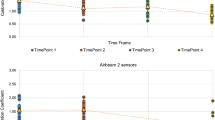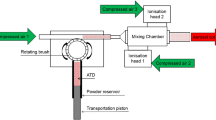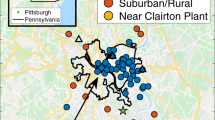Abstract
A high-flow personal sampler (HFPS) for airborne particulate matter has been developed and fully characterised, and validation tests have been carried out. The sampler is a low-cost gravimetric instrument designed to collect particulate matter with a 50% cut point at 2.5 μm aerodynamic equivalent diameter (PM2.5), where size selection is achieved by the use of porous polyurethane foam. Development of a porous foam selector was chosen over a cyclone or impactor due to the lightweight, low-cost, and compact design that could be achieved. The sampler flow rate of 16 l/min is achieved using a portable, flow-controlled pump; this flow rate is far higher than that of conventional personal samplers and the HFPS can therefore be used for personal sampling in the ambient environment over short sampling periods of much less than 24 h. The HFPS is currently being used in a study of particle exposure of urban transport users (cyclists, car drivers, bus and Underground rail passengers) where personal sampling over short time periods representing typical commuter journey times is required. The HFPS was fully characterised in chamber studies with a TSI aerodynamic particle sizer (APS). The sampler was then validated against a co-located U.S. EPA Federal Reference PM2.5 Well Impactor Ninety Six (WINS) and a KTL cyclone, and parallel testing was performed. Initial testing showed some penetration of particles through the porous foam structure; applying an oil coating to the foam eliminated this problem. Chamber testing was carried out on a number of different selector prototypes, with the final design giving a 50% penetration diameter (i.e., d50) of 2.4 μm at 16 l/min. The new sampler exhibited good agreement in three sets of co-located tests with established samplers, and parallel testing showed excellent agreement between paired HFPS samplers.
This is a preview of subscription content, access via your institution
Access options
Subscribe to this journal
Receive 6 print issues and online access
$259.00 per year
only $43.17 per issue
Buy this article
- Purchase on Springer Link
- Instant access to full article PDF
Prices may be subject to local taxes which are calculated during checkout
Similar content being viewed by others
Author information
Authors and Affiliations
Corresponding author
Rights and permissions
About this article
Cite this article
ADAMS, H., KENNY, L., NIEUWENHUIJSEN, M. et al. Design and validation of a high-flow personal sampler for PM2.5. J Expo Sci Environ Epidemiol 11, 5–11 (2001). https://doi.org/10.1038/sj.jea.7500152
Received:
Accepted:
Published:
Issue Date:
DOI: https://doi.org/10.1038/sj.jea.7500152



